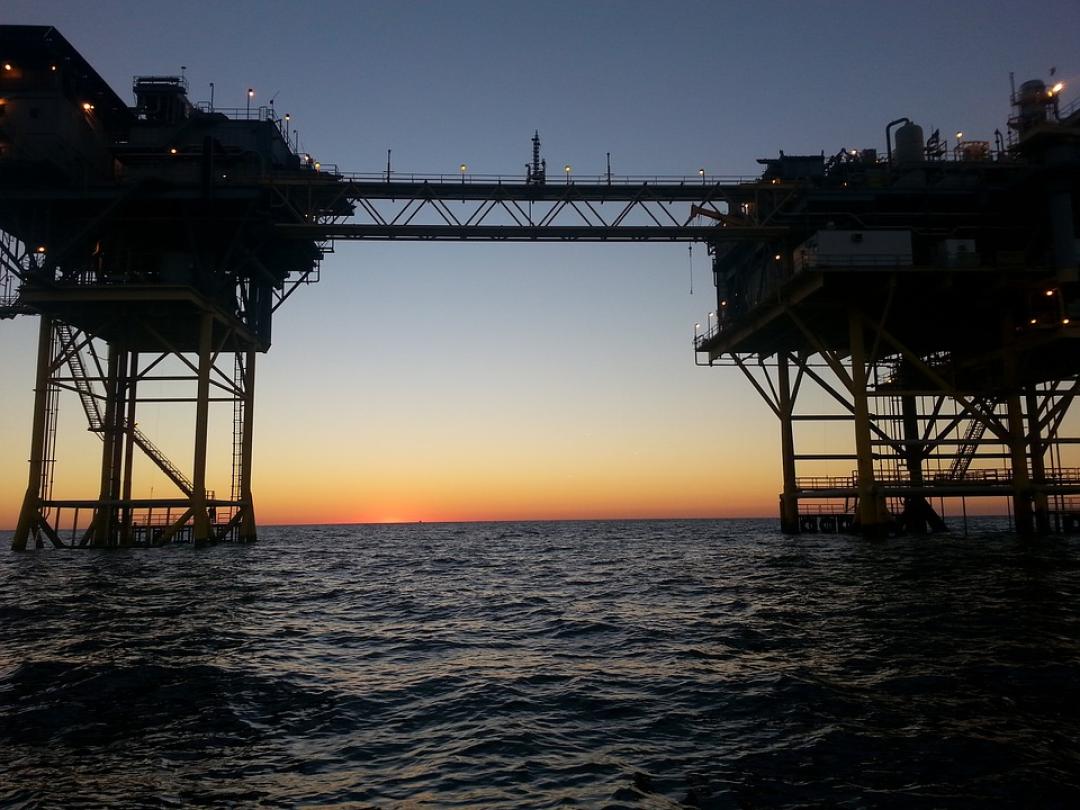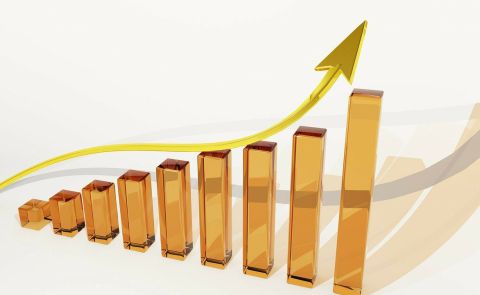
Recent economic developments regarding Azerbaijan

Non-oil sector helped Azerbaijan's GDP grow by 5.8% in January
The non-oil sector increases and rising global oil prices helped Azerbaijan's GDP grow by 5.8% in January this year, up from a 2.5% decline a year earlier.
The oil industry expanded by 0.6% in January 2021, up from a 6.2% decline the previous month, while the non-oil sector grew by 8.2%, compared to 0.1% growth the previous month, according to the State Statistics Committee. Gross domestic product (GDP) was $5.5 billion in nominal terms.
Azerbaijan's GDP increased by 5.8% in 2021, compared to a decline of 4.3% the previous year, as the nation relaxed the bulk of the restrictions set to combat the coronavirus outbreak. In 2022, the country expects to expand at a rate of 3.9%.
According to the World Bank, the stabilisation of oil prices, as well as investment and rebuilding spending, could assist Azerbaijan's economic development this year.
The ceasefire deal between Armenia and Azerbaijan in November 2020 reduced geopolitical tensions in the area, although the region's stability concerns remain high.
While the World Bank expected that Azerbaijan's GDP will rise by 3.1% in 2022, the International Monetary Fund revised its prediction to 2.3%.
Meanwhile, the Asian Development Bank predicted in June of last year that GDP would pick up to 2.5% in 2022 as domestic and international demand increased.
S&P Global Ratings confirmed Azerbaijan's long-term and short-term sovereign credit ratings in foreign and national currencies at 'BB+' last month, with the outlook remaining 'Stable.'
"The stable outlook indicates that we expect the ceasefire agreement between Azerbaijan, Armenia, and Russia to remain broadly in place over the next 12 months," the agency said in a report. "Favourable hydrocarbon prices and rising gas exports will support Azerbaijan's fiscal and balance of payments positions."
S&P believes that Azerbaijan's economic growth will be 2.7% in 2022.
Nonetheless, oil fields are aging, and oil output is falling, which new gas exports are unlikely to entirely compensate for. This might have an impact on Azerbaijan's economic, fiscal, and balance of payments performance in the medium to long term. Significant liquid assets held by the sovereign wealth fund SOFAZ help to limit the risks, according to the agency.
Azerbaijan's fiscal and external stock positions, according to S&P, are among the best in the 'BB' category. The government has amassed significant liquid assets, most of which are held in the sovereign wealth fund SOFAZ.
Azerbaijan expects gas output from its Shah Deniz field to exceed 24 billion cubic meters in 2022
Natural gas output from Azerbaijan's massive offshore Shah Deniz field is expected to exceed 24 billion cubic metres (bcm) this year, up from 23 bcm in 2021.
Since 2006, the BP-led consortium constructing the Shah Deniz project in Azerbaijan has been pumping gas from the offshore field's first phase, providing more than 10 billion cubic meters of gas per year through the South Caucasus Pipeline to Azerbaijan, Georgia, and Turkey.
The second phase began production in 2018, increasing 16 billion cubic meters of gas production capacity to the overall capacity of 26 billion cubic meters.
According to a government source who did not want to be identified, total gas output in the country is likely to hit 45-46 bcm this year.
He stated that 12-15 billion cubic meters of gas will be put back into the stratum to improve oil production, which is rapidly diminishing due to natural causes.
"In 2022, the country's industrial, commercial, and other gas customers will be supplied with 14 billion cubic meters of gas. In addition, we must account for the injection and storage of 2.5 billion cubic meters of gas in our two gas storage facilities," the person said.
The remaining volume, he claimed, will be sold to Georgia, Turkey, and other European nations.
In 2021, Azerbaijan produced 43.9 billion cubic meters of gas, with 23 billion cubic meters coming from the Shah Deniz field. About 19 billion cubic meters were exported, with the balance going to local customers and being injected into reservoirs to boost oil recovery.
Official statistics indicated that Azerbaijan nearly quadrupled gas shipments from the Shah Deniz field to Turkey, Georgia, and Europe in 2021, as the Southern Gas Corridor (SGC) continues to assist the nation expand its share of the market previously controlled by Russia.
Last year, Shah Deniz exported 17.618 billion cubic meters of gas, rising 43.6% from the previous year.
Azerbaijan began selling commercial natural gas to Europe with its $40 billion Southern Gas Route in December 2020, when the last section of the corridor, the Trans-Adriatic Pipeline (TAP), became online. The initiative aims to lessen Europe's reliance on Russian natural gas supplies, which account for 34% of the continent's gas market.
TAP links to the Trans-Anatolian Pipeline (TANAP) on the Turkish-Greek border near Kipoi, and then travels via Greece, Albania, and the Adriatic Sea before arriving on Italy's southern shore.
The TAP was used to transport gas to Europe. The TANAP and Baku-Tbilisi-Erzurum pipelines were used to transport natural gas to Turkey.
Azerbaijan began producing natural gas from a fifth well on the Shah Deniz II field's north edge last year. The partnership commenced gas production at the southeast side of the field in July, which includes four wells, two new flowlines, and several subsea infrastructures. In the third quarter of 2021, the flank attained full production rates. For the first time, the Shah Deniz Bravo platform's daily production rates surpassed those of the Shah Deniz Alpha platform. The Shah Deniz Alpha and Bravo sites generated roughly 16 billion cubic meters of gas and 3 million tonnes (24 million barrels) of condensate in the first three quarters of the year.
Azerbaijan wants to provide 10 billion cubic meters of gas per year to the European market, with 8 billion cubic meters going to Italy and a combined 2 billion cubic meters going to Greece and Bulgaria. This year, the nation expects to sell 5 billion cubic meters to Europe and nearly 12 billion cubic meters to Turkey.
In January, Azerbaijan's oil exports decreased but its gas exports increased dramatically
Azerbaijan's oil exports fell in January, although revenue from sales surged because to rising oil prices on global markets. The country's commercial natural gas shipments to Europe from its big Shah Deniz II field increased in the first month of the year.
According to the State Customs Committee, the government cut oil exports by 12.7% year on year to 3.5 million tonnes while increasing natural gas exports by 44% to 1.613 billion cubic metres (bcm).
Oil sales revenue increased by 49.4% year over year to $2.031 billion. The Azeri-Chirag-Guneshli (ACG) oilfields project brought in $683.1 million in January, while natural gas and condensate sales from the Shah Deniz field brought in $149.9 million.
ACG is Azerbaijan's biggest oil field block, built by an international partnership led by BP. On September 20, 1994, the first production sharing agreement for developing the block was signed, and on September 14, 2017, a new agreement for cooperative exploitation of these fields and production sharing was agreed. The agreement calls for the territories to be developed by the year 2049.
In January, sixteen countries purchased gas from Azerbaijan. Italy paid $1.038 billion for 1.76 million tonnes of oil, while Ukraine paid $196 million for 337,000 tonnes and Israel paid $152 million for 267,000 tonnes. Turkey, Tunisia, Indonesia, Vietnam, China, India, Croatia, France, Belarus, and Canada have all purchased Azerbaijani oil.
The nation exports oil from the ACG via the Baku-Tbilisi-Ceyhan (BTC) pipeline, which runs via Georgia and Turkey. It also transports oil to Russia via the Baku-Novorossiisk pipeline, Georgia via the Baku-Supsa pipeline and rail.
Azerbaijan generates natural gas primarily from its huge offshore Shah Deniz field. In January, gas exports accounted for 26.02% of Azerbaijan's total exports.
According to the State Statistics Committee, gas exports from the Shah Deniz field increased by 4.7% year on year to 1.683 billion cubic meters in January.
The Southern Gas Corridor's inauguration in December 2020 allowed Azerbaijan to begin exporting gas to Europe, allowing the ex-Soviet republic to gain its share of the market, which had previously been controlled by Russia.
The project's development partnership, led by BP, has been producing gas from the offshore field's first phase since 2006, sending more than 10 billion cubic meters of gas per year to Azerbaijan, Georgia, and Turkey. The second phase began production in 2018, and at its peak, added 16 billion cubic metres (bcm) of gas production capacity, bringing total capacity to 26 bcm.
Azerbaijan sold 28.1 million tonnes of oil and roughly 19 billion cubic meters of gas in 2021. Oil sales brought in $13.9 billion, while natural gas sales brought in $6.5 billion.
See Also


Armenia Records 5.9% GDP Growth in 2024, Missing 7% Goal

Yerevan Balances Strategic Ties with Both US and Russia, Says Foreign Minister

FM Mirzoyan: Peace Deal with Azerbaijan Is Within Reach

Pashinyan and Erdogan Hold Call, Reaffirm Commitment to Ongoing Dialogue

